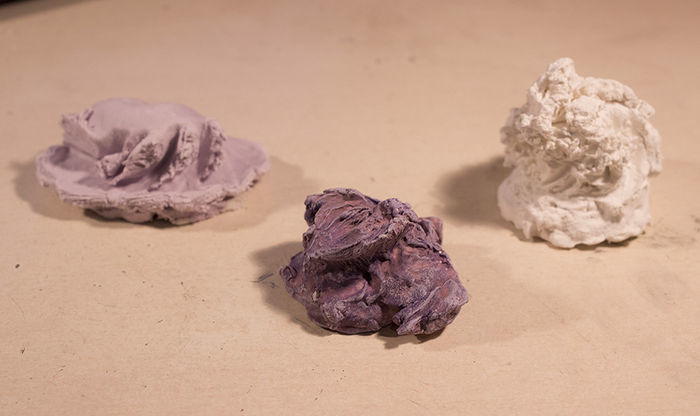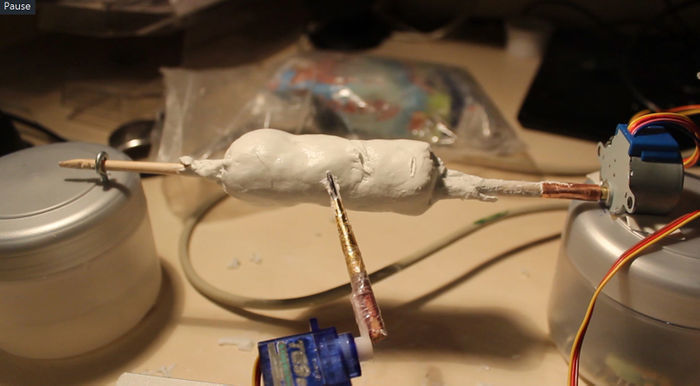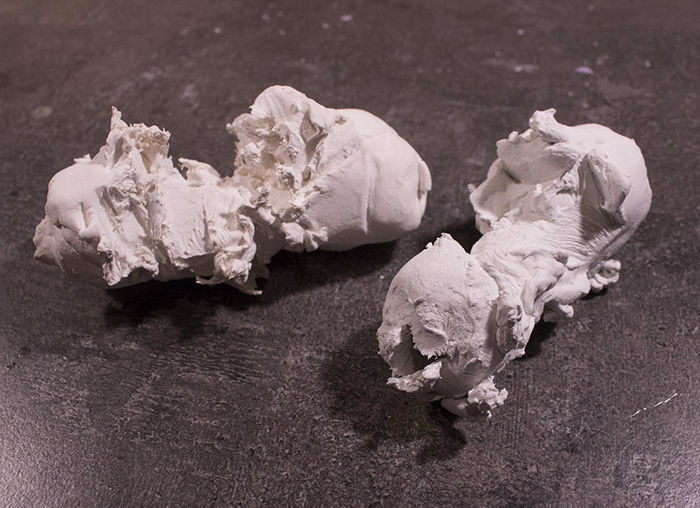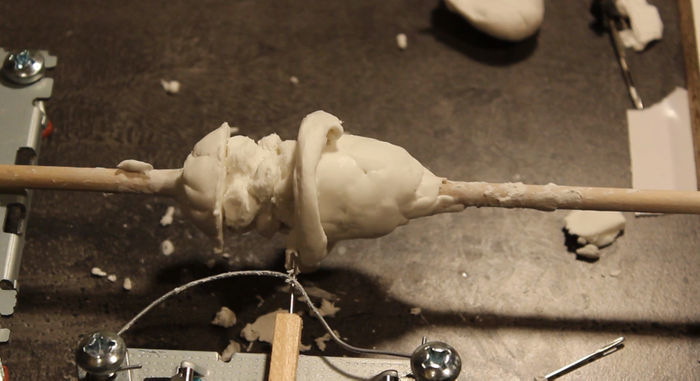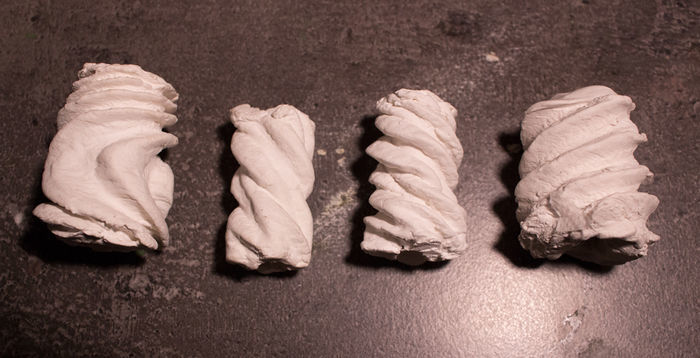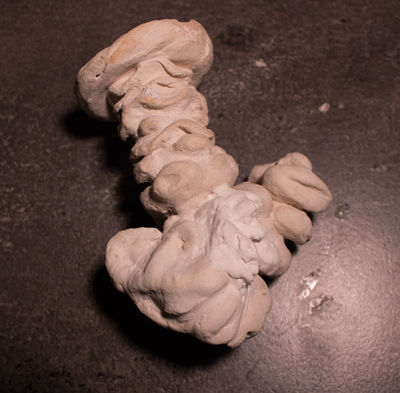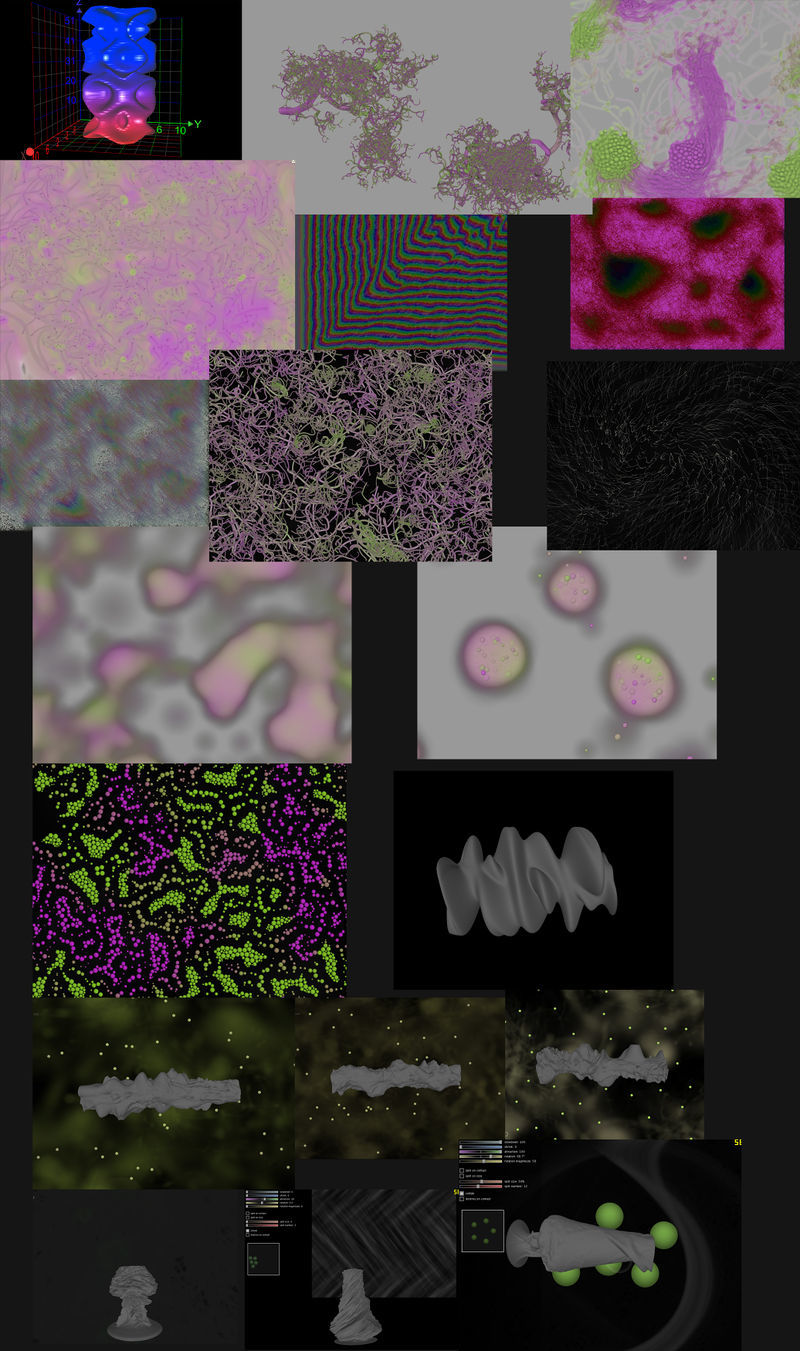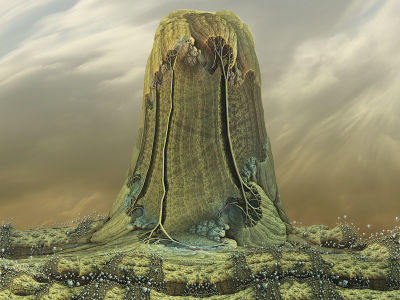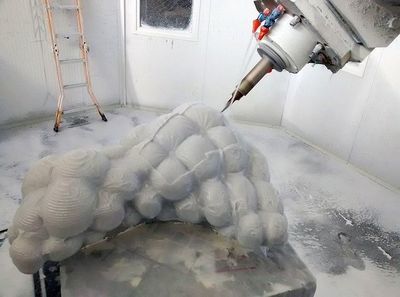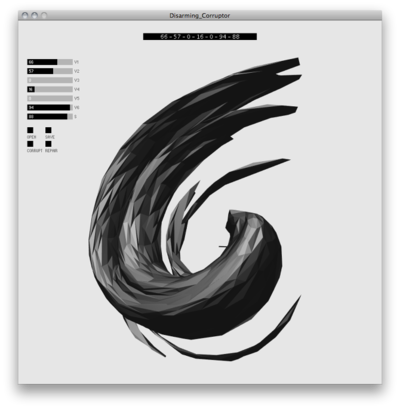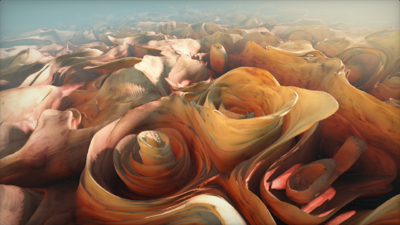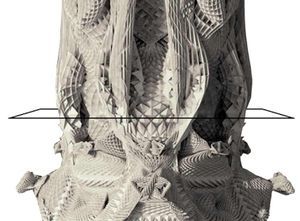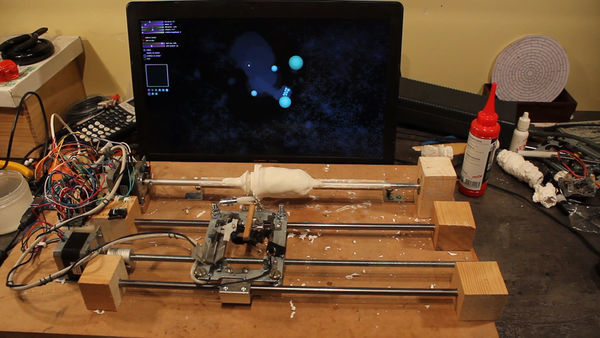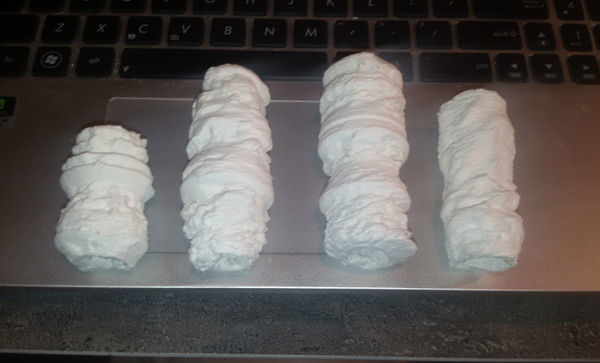Difference between revisions of "User:TimDemper/Tools of the trade"
| (21 intermediate revisions by the same user not shown) | |||
| Line 1: | Line 1: | ||
=Tools of the trade= | =Tools of the trade= | ||
| + | |||
| + | ==First idea== | ||
I want to create a tool where I can generate actual physical objects with. The tool could be very simple (at first). For example: A sculpting tool rotating in a certain pattern. You can hold It with a piece of clay to generate a certain structure. Or materials that generate a structure of it’s own (for example pu foam or hot glue). Or something generated in software and 3d printed (probably don’t want to do that). And many more ways to generate physical object I could do research on. It’s probably the most interesting to use combination of a few ways to generate objects. For example: droppings drops of purr foam on an object, in kind of cnc machine, the pattern could be generated by software. | I want to create a tool where I can generate actual physical objects with. The tool could be very simple (at first). For example: A sculpting tool rotating in a certain pattern. You can hold It with a piece of clay to generate a certain structure. Or materials that generate a structure of it’s own (for example pu foam or hot glue). Or something generated in software and 3d printed (probably don’t want to do that). And many more ways to generate physical object I could do research on. It’s probably the most interesting to use combination of a few ways to generate objects. For example: droppings drops of purr foam on an object, in kind of cnc machine, the pattern could be generated by software. | ||
| Line 16: | Line 18: | ||
https://youtu.be/40D6k5LFQoM | https://youtu.be/40D6k5LFQoM | ||
| + | |||
| + | [[File:m_1.jpg|700px]] | ||
result<br> | result<br> | ||
| Line 21: | Line 25: | ||
I used a stepper motor and the servo from the previous experiment to create something closer to the idea I have for the final machine. There should be 2 different sculpting tools (I have to experiment what tools works best or give the most interesting results). | I used a stepper motor and the servo from the previous experiment to create something closer to the idea I have for the final machine. There should be 2 different sculpting tools (I have to experiment what tools works best or give the most interesting results). | ||
| + | |||
| + | [[File:m_2.jpg|700px]] | ||
A video of the second experiment: | A video of the second experiment: | ||
| − | |||
https://youtu.be/imtjk2qApas | https://youtu.be/imtjk2qApas | ||
| Line 29: | Line 34: | ||
[[File:tt_2.jpg|700px]] | [[File:tt_2.jpg|700px]] | ||
| − | + | I could maybe use input data from a source to generate the object. The source could be for example from sensors of the room the machine is in, or user input. Or it could be data from the internet. | |
| − | maybe use input data from a source to generate the object. The source could be for example from sensors of the room the machine is in, or user input. Or it could be data from the internet. | ||
processing power from pc, arduino due or raspberi pi for more complex formulas? (if needed) | processing power from pc, arduino due or raspberi pi for more complex formulas? (if needed) | ||
| + | I wanted the machine to be able to make anything, and not just random shapes. It needed a way to send very specific commands to it. I maybe could have just used an existing 3d printer or cnc machine. But i thought it was way more interesting to make an own machine an also learn how a cnc machine works and can be created. I learned a lot about how 3d printers and cnc machines works, how to use stepper motors, more about programming on the arduino, and how to make it work together with an external input. Processing on a pc is this case. | ||
| + | |||
| + | I got my inspiration from various other diy cnc and 3d printers and actual 3d and cnc printers. | ||
| + | http://www.instructables.com/id/Poor-Mans-3D-Printer/ | ||
| + | https://www.youtube.com/watch?v=s_W0cPu5Gqs | ||
| + | https://www.youtube.com/watch?v=Z0vQIaUZGu4 | ||
| + | custom 3d printer: | ||
| + | https://www.youtube.com/watch?v=snOErpOP5Xk | ||
| + | |||
| + | I got the idea of using a dvd drive from it for example. It is has a precise and easy to control slider for linear motion on it. The downside is that they are kind of weak and have only a small range. | ||
| + | Also the problem with the leadscrew not being exactly straight was solved by looking how it was solved on the prusa i3 3d printer. It was using a flexible coupling to reduce the wiggling of the leadscrew. | ||
| + | |||
| + | video of the third machine:<br> | ||
https://youtu.be/S3yiuXqMNlc | https://youtu.be/S3yiuXqMNlc | ||
| + | |||
| + | [[File:m_3.jpg|700px]] | ||
| + | |||
| + | result<br> | ||
| + | [[File:tt_3.jpg|700px]] | ||
| + | |||
| + | [[File:tt_4.jpg|400px]] | ||
| + | |||
| + | I was pretty contented with this machine but it could only create very tiny objects, and it was very slow. The final machine is much faster, and could create bigger objects. It could also carve in a higher resolution because the lead screw can be turned in very small amounts. | ||
| + | |||
| + | first video sketch. This set op is a kind of sketch for what the actual objects does now. It shows how i generate the object using the tablet as input to create the realities. And an object on the machine of what that object might look like. The objects aren't really related here, the objects are from mathematical formulas. | ||
| + | https://youtu.be/ptpMh06Affs | ||
| + | |||
| + | Reasons why i used clay as a cnc material: | ||
| + | It can be edited after you get the objects form the machine, the objects can be deformed or combined to create a larger object. It also can be smoothed very easily with a brush, so with some editing on the objects afterward, i can actually use it in combination with traditional modeling to create larger objects. (this wasn't my focus in this minor, but it could be used for this in the future). It is also nice that it looks a bit chaotic, which almost give a hand made look to it. | ||
| + | It is also a very practical material, because it's cheap, easy to deform (no large milling drills needed) and could be carved out relatively fast. | ||
| + | |||
| + | All the experiments from now where generated using mathematical formulas. But I wanted the tool to create alternative realities. It was a very challenging task to generate the objects from the particles. | ||
| + | |||
| + | The objects are not actual physical correct objects of what the models would look. Than I would have to make a full physical 3d model of how the particles are moving, which is almost impossible in this short amount of time, especially since it has to run in real-time. Instead I chose a more simple approach. I made a kind of 2d model and used it as a height map for the 3d object. This creates the illusion of an actual physical model. It is more about people believe the object could be like that in the reality. | ||
| + | |||
| + | This is a selection of the experiments i did in prossessing (except for the first one, which is in a 3d formula program). It is a selection of about 60 different sketches. Of course not all the sketches are completely different, but build upon the previous sketch. So every sketch is a kind of mutation on the previous sketches. | ||
| + | The top ones are the oldest and the bottom the newest. I started out with programming the particles to make them move and draw on the canvas on a lot of different ways. I used my inspiration from how particles move move and interact in this reality. From all these experiments i implemented the most interesting parameters in the final version of the program. Most of the logic in the final version are found somewhere in all the experiments i did. | ||
| + | |||
| + | [[File:tt_5.jpg|800px]] | ||
==Research/inspiration== | ==Research/inspiration== | ||
| Line 47: | Line 89: | ||
[[File:Rsp3.jpg|400px]] | [[File:Rsp3.jpg|400px]] | ||
| + | fractals, how they where discorvered and how you can make very complex and esthatic shapes from simple rules. | ||
| + | https://www.ted.com/talks/benoit_mandelbrot_fractals_the_art_of_roughness | ||
| − | + | I think fractals are interesting, because it creates an image of only a set of simple rules. The fractals can also be infinitely zoomed in and out, so you could say every variation of a fractal is it's own reality. | |
| + | |||
| + | These are digitally generated using different algorithms, and digitally edited afterwards. Then they are fabricated with a 3d printer. It may be a good idea to edit the generated objects by hand or make them part of a bigger structure, as the clay material is easy to edit afterwards and you can get more interesting structures. By copying and getting inspired by the strucure of the generated object the object is still semi generated.<br> | ||
[[File:Rsp4.jpg|400px]] | [[File:Rsp4.jpg|400px]] | ||
| Line 56: | Line 102: | ||
http://www.kevinmackart.com/sculpture.html | http://www.kevinmackart.com/sculpture.html | ||
| − | Objects generated using input data: | + | '''Objects generated using input data:''' |
| − | generated from a painting of a sheep: | + | This is a milled out object generated from a painting of a sheep: |
| + | i think especially the milling process is interesting in this artwork. | ||
[[File:Rsp6.jpg|400px]] | [[File:Rsp6.jpg|400px]] | ||
| − | + | ||
| + | This program generates objects by modifying the vertexes of a 3d model. It also uses sliders to change parameters and generate an object of it. | ||
[[File:Rsp7.png|400px]] | [[File:Rsp7.png|400px]] | ||
Generated using a pixel shader: | Generated using a pixel shader: | ||
| + | Pixel shaders can set the color value of every pixel individually. Because of this you can theoretically create any image or animation possible. You have to use mathematics and rules to make the images. I used pixel shaders for the height maps of my own machine. | ||
[[File:Rsp8.png|400px]] | [[File:Rsp8.png|400px]] | ||
| + | https://www.shadertoy.com/ | ||
| + | |||
| + | |||
| + | https://www.ted.com/talks/michael_hansmeyer_building_unimaginable_shapes?language=en | ||
| + | Structures inspired by cell division. The pilars are made out of a primitive shape, that is folded a lot of times with differend folding ratios. Then it is sliced and fabricated from cardboard. | ||
| + | It's interesting how these simple rules can create very complex shapes, that are almost impossible to sculpt by hand, and almost unimaginable. <br> | ||
| + | |||
| + | [[File:fh_12.jpg|300px]] | ||
| + | [[File:fh_13.jpg|300px]] | ||
| Line 86: | Line 144: | ||
http://notnot.home.xs4all.nl/ima/ima_youtube.html<br> | http://notnot.home.xs4all.nl/ima/ima_youtube.html<br> | ||
| − | + | Ima traveller (1996) is interactive computer software for exploring an infinite universe. It enables you to make a journey into a space that is being created in real time. This space develops in the direction you are moving into, so there is no end to it. You travel forward in a smooth motion, you can drift in all directions, but you can never go back to where you came from. You are zooming in on a surface of infinite size, never reaching any boundaries.<br> | |
| − | + | http://notnot.home.xs4all.nl/ima/IMAtraveller.html | |
| + | |||
Mathematics and art:<br> | Mathematics and art:<br> | ||
https://en.wikipedia.org/wiki/Mathematics_and_art <br> | https://en.wikipedia.org/wiki/Mathematics_and_art <br> | ||
| + | How artist have used mathematics in artwork, in the history and in the present day. | ||
Superformula for making natural shapes:<br> | Superformula for making natural shapes:<br> | ||
https://en.wikipedia.org/wiki/Superformula <br> | https://en.wikipedia.org/wiki/Superformula <br> | ||
| + | Haven't used it for now, but could be a very interesting addition to the model. Instead of only round particles i could use it to give every particle a different shape, and it could be a starting point to create organism and cells for future artworks. | ||
nodebox program for generating art:<br> | nodebox program for generating art:<br> | ||
https://www.nodebox.net/code/index.php/Superfolia<br> | https://www.nodebox.net/code/index.php/Superfolia<br> | ||
| + | Haven't created anything very interesting with it yet, but it seems to be a program with a lot of potential to generate artworks. | ||
| + | |||
| + | '''Other interesting links''' | ||
Evolution art<br> | Evolution art<br> | ||
https://en.wikipedia.org/wiki/Evolutionary_art<br> | https://en.wikipedia.org/wiki/Evolutionary_art<br> | ||
| + | Art generated by using the rules of evolution (survival of the fittest). | ||
Algorithmic/generated art<br> | Algorithmic/generated art<br> | ||
| + | (Art created by using mathematical rules)<br> | ||
https://en.wikipedia.org/wiki/Algorithmic_art<br> | https://en.wikipedia.org/wiki/Algorithmic_art<br> | ||
| + | |||
| + | |||
| + | Generative art in general:<br> | ||
https://en.wikipedia.org/wiki/Generative_art<br> | https://en.wikipedia.org/wiki/Generative_art<br> | ||
| − | |||
| − | |||
| − | + | 3d formulas: | |
| − | + | program to convert formulas to 3d objects:<br> | |
| − | + | https://developer.cdn.mozilla.net/media/uploads/demos/g/u/guska076/1f2b2abce4f159de89108615cd77349c/implicit-equation-3d_1371322341_demo_package/index.html<br> | |
| − | |||
| + | How there are a lot of mathematical shapes to be found in nature.<br> | ||
wiskunde in natuur: http://www.scientias.nl/fibonacci-in-de-natuur/<br> | wiskunde in natuur: http://www.scientias.nl/fibonacci-in-de-natuur/<br> | ||
| Line 133: | Line 200: | ||
http://www.pbs.org/wgbh/nova/blogs/physics/2012/11/a-guide-to-different-kinds-of-parallel-universes/<br> | http://www.pbs.org/wgbh/nova/blogs/physics/2012/11/a-guide-to-different-kinds-of-parallel-universes/<br> | ||
http://www.dailygalaxy.com/my_weblog/2014/05/other-universes-may-operate-under-vastly-different-physical-laws-todays-most-popular.html | http://www.dailygalaxy.com/my_weblog/2014/05/other-universes-may-operate-under-vastly-different-physical-laws-todays-most-popular.html | ||
| + | |||
| + | fundamental particles and interactions in this world:<br> | ||
| + | [[File:rsp9.jpg|450px]]<br> | ||
| + | http://www.quick-facts.co.uk/science/particles.html | ||
| + | |||
| + | https://en.wikipedia.org/wiki/List_of_particles | ||
| + | http://abyss.uoregon.edu/~js/ast123/lectures/lec07.html | ||
| + | |||
| + | ==final results== | ||
| + | [[File:mm4.jpg|600px]] | ||
| + | |||
| + | The tool generates alternative realities, by changing the fundamental particles of the universe. | ||
| + | The object that is carved out from the machine is based on the movement, position and size of the particles. It represents how a natural objects from a parallel universe with the given particles might look like. | ||
| + | There are theories, that a there are an infinite amount of different kinds of realities, which may or may not have different kinds of physical rules. | ||
| + | With this tool I can make an object of a reality with my own defined rules. | ||
| + | Everything you change in the alternative reality is visible in the carved out object. If you make the particles explode, you will see the object getting big and noisy. | ||
| + | If you make the particles rotate you will see curvy shapes in the object. If you make them split you may see branch like structures in the object. If you make them go fast and straightforward, you will see straight lines in the object. And so on… | ||
| + | I can create particles by modifying the given parameters. The parameters are mostly based on how matter in this universe moves and interacts. With matter I mean either fundamental particles of this universe, like atoms and electrons or larger particles like cells and planets. | ||
| + | In the created alternative reality the particles could be anything, as the rules and fundamental particles are different. And particles like atoms and electrons may not even exist. | ||
| + | Every type of created particles is saved so I can create them again later on, and so you can see which particles are used in the created alternative reality. | ||
| + | |||
| + | The resulting objects: | ||
| + | |||
| + | [[File:mm40.jpg|600px]] | ||
| + | |||
| + | ==video== | ||
| + | |||
| + | https://youtu.be/xweQ0TY7IFg | ||
Latest revision as of 17:11, 15 January 2016
Contents
Tools of the trade
First idea
I want to create a tool where I can generate actual physical objects with. The tool could be very simple (at first). For example: A sculpting tool rotating in a certain pattern. You can hold It with a piece of clay to generate a certain structure. Or materials that generate a structure of it’s own (for example pu foam or hot glue). Or something generated in software and 3d printed (probably don’t want to do that). And many more ways to generate physical object I could do research on. It’s probably the most interesting to use combination of a few ways to generate objects. For example: droppings drops of purr foam on an object, in kind of cnc machine, the pattern could be generated by software. The data of the generated object could be a mathematical algorithm, maybe mixed with some randomness (code generated randomness or influenced by imperfections of the building process). Or data from sensor input.
I want to create generated art, because i'm interested in different realities. The endless possibilities of unknown realities that may or may not exists. Almost everything that exists can be calculated or modeled by mathematical formulas and rules. Some aren't discovered yet or are too complex for us. If I want to create a new kind of nature I can backwards reason by using different kind of formulas and rules, and creating a new world of those formulas or rules. By generating art by a specific set of rules there will arise new kinds of objects and structures, that are hard to imagine.
I already created some generated artwork, but want to develop this further and create tools that can help me generating artworks. I will experiment with both a software and hardware. A software only generated object (can be 2d, 3d, and possibly 3d printed) can be much more complex, and hasn't the limitations that the material you will make the object from has. The interesting part about generating the artworks with hardware is that you instantly have a physical object. Also the imperfections and structures of the material can make the objects more interesting. Or the special properties of certain materials. For example the expanding of foam, melting/collapsing of styrofoam.
experiments
First I wanted to experiment with a hardware solution for generating objects. It has 3 servo's controlled by a arduino and can create very primitive shapes. The objects where also very chaotic, because the clay crumbled a lot. These imperfections were a nice addition, since it gave them a more natural look, almost like weird shaped rocks. But the shapes weren't all that interesting but they might become more complex if I use more servo's different kinds of tools on them or a completely different approach. Looking at the machine and how the objects are made is a lot more interesting than the actual objects it creates. Especially if the tool becomes very complex and the servo's are painted. It will then be a (scale model) of a factory where new kinds of generated shapes are created.
A video of the first experiment:
I used a stepper motor and the servo from the previous experiment to create something closer to the idea I have for the final machine. There should be 2 different sculpting tools (I have to experiment what tools works best or give the most interesting results).
A video of the second experiment: https://youtu.be/imtjk2qApas
I could maybe use input data from a source to generate the object. The source could be for example from sensors of the room the machine is in, or user input. Or it could be data from the internet. processing power from pc, arduino due or raspberi pi for more complex formulas? (if needed)
I wanted the machine to be able to make anything, and not just random shapes. It needed a way to send very specific commands to it. I maybe could have just used an existing 3d printer or cnc machine. But i thought it was way more interesting to make an own machine an also learn how a cnc machine works and can be created. I learned a lot about how 3d printers and cnc machines works, how to use stepper motors, more about programming on the arduino, and how to make it work together with an external input. Processing on a pc is this case.
I got my inspiration from various other diy cnc and 3d printers and actual 3d and cnc printers. http://www.instructables.com/id/Poor-Mans-3D-Printer/ https://www.youtube.com/watch?v=s_W0cPu5Gqs https://www.youtube.com/watch?v=Z0vQIaUZGu4 custom 3d printer: https://www.youtube.com/watch?v=snOErpOP5Xk
I got the idea of using a dvd drive from it for example. It is has a precise and easy to control slider for linear motion on it. The downside is that they are kind of weak and have only a small range. Also the problem with the leadscrew not being exactly straight was solved by looking how it was solved on the prusa i3 3d printer. It was using a flexible coupling to reduce the wiggling of the leadscrew.
video of the third machine:
https://youtu.be/S3yiuXqMNlc
I was pretty contented with this machine but it could only create very tiny objects, and it was very slow. The final machine is much faster, and could create bigger objects. It could also carve in a higher resolution because the lead screw can be turned in very small amounts.
first video sketch. This set op is a kind of sketch for what the actual objects does now. It shows how i generate the object using the tablet as input to create the realities. And an object on the machine of what that object might look like. The objects aren't really related here, the objects are from mathematical formulas. https://youtu.be/ptpMh06Affs
Reasons why i used clay as a cnc material: It can be edited after you get the objects form the machine, the objects can be deformed or combined to create a larger object. It also can be smoothed very easily with a brush, so with some editing on the objects afterward, i can actually use it in combination with traditional modeling to create larger objects. (this wasn't my focus in this minor, but it could be used for this in the future). It is also nice that it looks a bit chaotic, which almost give a hand made look to it. It is also a very practical material, because it's cheap, easy to deform (no large milling drills needed) and could be carved out relatively fast.
All the experiments from now where generated using mathematical formulas. But I wanted the tool to create alternative realities. It was a very challenging task to generate the objects from the particles.
The objects are not actual physical correct objects of what the models would look. Than I would have to make a full physical 3d model of how the particles are moving, which is almost impossible in this short amount of time, especially since it has to run in real-time. Instead I chose a more simple approach. I made a kind of 2d model and used it as a height map for the 3d object. This creates the illusion of an actual physical model. It is more about people believe the object could be like that in the reality.
This is a selection of the experiments i did in prossessing (except for the first one, which is in a 3d formula program). It is a selection of about 60 different sketches. Of course not all the sketches are completely different, but build upon the previous sketch. So every sketch is a kind of mutation on the previous sketches. The top ones are the oldest and the bottom the newest. I started out with programming the particles to make them move and draw on the canvas on a lot of different ways. I used my inspiration from how particles move move and interact in this reality. From all these experiments i implemented the most interesting parameters in the final version of the program. Most of the logic in the final version are found somewhere in all the experiments i did.
Research/inspiration
An alternative world or object can be created by using fractals. They are generated by using only a set of mathematical rules.
3d mandelbrot
3d landscape like fractal
fractals, how they where discorvered and how you can make very complex and esthatic shapes from simple rules. https://www.ted.com/talks/benoit_mandelbrot_fractals_the_art_of_roughness
I think fractals are interesting, because it creates an image of only a set of simple rules. The fractals can also be infinitely zoomed in and out, so you could say every variation of a fractal is it's own reality.
These are digitally generated using different algorithms, and digitally edited afterwards. Then they are fabricated with a 3d printer. It may be a good idea to edit the generated objects by hand or make them part of a bigger structure, as the clay material is easy to edit afterwards and you can get more interesting structures. By copying and getting inspired by the strucure of the generated object the object is still semi generated.
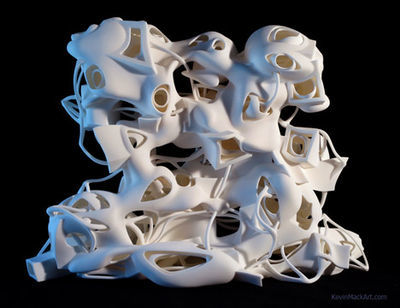
http://www.kevinmackart.com/sculpture.html
Objects generated using input data:
This is a milled out object generated from a painting of a sheep: i think especially the milling process is interesting in this artwork.
This program generates objects by modifying the vertexes of a 3d model. It also uses sliders to change parameters and generate an object of it.
Generated using a pixel shader: Pixel shaders can set the color value of every pixel individually. Because of this you can theoretically create any image or animation possible. You have to use mathematics and rules to make the images. I used pixel shaders for the height maps of my own machine.
https://www.ted.com/talks/michael_hansmeyer_building_unimaginable_shapes?language=en
Structures inspired by cell division. The pilars are made out of a primitive shape, that is folded a lot of times with differend folding ratios. Then it is sliced and fabricated from cardboard.
It's interesting how these simple rules can create very complex shapes, that are almost impossible to sculpt by hand, and almost unimaginable.
custom cnc machines:
https://www.youtube.com/watch?v=s_W0cPu5Gqs
https://www.youtube.com/watch?v=Z0vQIaUZGu4
custom 3d printer:
https://www.youtube.com/watch?v=snOErpOP5Xk
other:
Traveler(generated video):
http://notnot.home.xs4all.nl/ima/ima_youtube.html
Ima traveller (1996) is interactive computer software for exploring an infinite universe. It enables you to make a journey into a space that is being created in real time. This space develops in the direction you are moving into, so there is no end to it. You travel forward in a smooth motion, you can drift in all directions, but you can never go back to where you came from. You are zooming in on a surface of infinite size, never reaching any boundaries.
http://notnot.home.xs4all.nl/ima/IMAtraveller.html
Mathematics and art:
https://en.wikipedia.org/wiki/Mathematics_and_art
How artist have used mathematics in artwork, in the history and in the present day.
Superformula for making natural shapes:
https://en.wikipedia.org/wiki/Superformula
Haven't used it for now, but could be a very interesting addition to the model. Instead of only round particles i could use it to give every particle a different shape, and it could be a starting point to create organism and cells for future artworks.
nodebox program for generating art:
https://www.nodebox.net/code/index.php/Superfolia
Haven't created anything very interesting with it yet, but it seems to be a program with a lot of potential to generate artworks.
Other interesting links
Evolution art
https://en.wikipedia.org/wiki/Evolutionary_art
Art generated by using the rules of evolution (survival of the fittest).
Algorithmic/generated art
(Art created by using mathematical rules)
https://en.wikipedia.org/wiki/Algorithmic_art
Generative art in general:
https://en.wikipedia.org/wiki/Generative_art
3d formulas:
program to convert formulas to 3d objects:
https://developer.cdn.mozilla.net/media/uploads/demos/g/u/guska076/1f2b2abce4f159de89108615cd77349c/implicit-equation-3d_1371322341_demo_package/index.html
How there are a lot of mathematical shapes to be found in nature.
wiskunde in natuur: http://www.scientias.nl/fibonacci-in-de-natuur/
schaal:
http://htwins.net/scale2/index.html
power of tens:
https://www.youtube.com/watch?v=0fKBhvDjuy0
The Universe in a Nutshell:
https://www.youtube.com/watch?v=0NbBjNiw4tk
Multiverse
https://www.youtube.com/watch?v=Ywn2Lz5zmYg
Dimensions
https://www.youtube.com/watch?v=p4Gotl9vRGs
parallel universes
http://www.pbs.org/wgbh/nova/blogs/physics/2012/11/a-guide-to-different-kinds-of-parallel-universes/
http://www.dailygalaxy.com/my_weblog/2014/05/other-universes-may-operate-under-vastly-different-physical-laws-todays-most-popular.html
fundamental particles and interactions in this world:
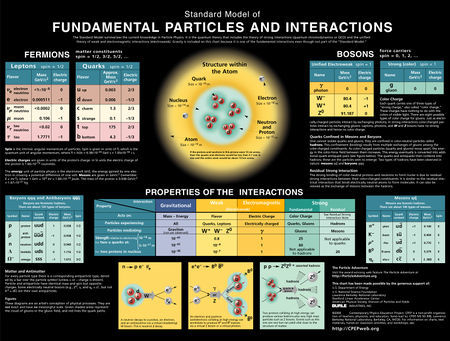
http://www.quick-facts.co.uk/science/particles.html
https://en.wikipedia.org/wiki/List_of_particles http://abyss.uoregon.edu/~js/ast123/lectures/lec07.html
final results
The tool generates alternative realities, by changing the fundamental particles of the universe. The object that is carved out from the machine is based on the movement, position and size of the particles. It represents how a natural objects from a parallel universe with the given particles might look like. There are theories, that a there are an infinite amount of different kinds of realities, which may or may not have different kinds of physical rules. With this tool I can make an object of a reality with my own defined rules. Everything you change in the alternative reality is visible in the carved out object. If you make the particles explode, you will see the object getting big and noisy. If you make the particles rotate you will see curvy shapes in the object. If you make them split you may see branch like structures in the object. If you make them go fast and straightforward, you will see straight lines in the object. And so on… I can create particles by modifying the given parameters. The parameters are mostly based on how matter in this universe moves and interacts. With matter I mean either fundamental particles of this universe, like atoms and electrons or larger particles like cells and planets. In the created alternative reality the particles could be anything, as the rules and fundamental particles are different. And particles like atoms and electrons may not even exist. Every type of created particles is saved so I can create them again later on, and so you can see which particles are used in the created alternative reality.
The resulting objects:

